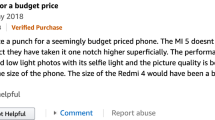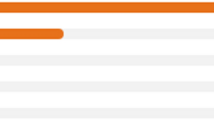Abstract
The Internet of Things (IoT) plays an important role in helping the hotel industry increase customer satisfaction while maintaining affordable costs. IoT consumers review and rate the hotels online. The ratings are based on the Value, Apartment, Site, Sanitation, Front Desk, Facility, Professional Provision, Internet, and Packing. Traditional systems that predict hotel ratings with minimum accuracy create complexity through their analysis of the ratings. Thus, the effective deep learning techniques are used to analyze the reviews in order to help consumers choose better hotels. In this paper, different classification algorithms, such as convolutional neural network-based deep learning (CNN-DL), support vector machine network-based deep learning are applied to predict attributes. The system utilizes the TripAdvisor site, which is a well-known America dataset for examining system efficiency. The experimental results show that the CNN-DL algorithm has better classification accuracy and a lower error rate as compared to other algorithms.










Similar content being viewed by others
References
Al-Fawaeer, M., Hamdan, K. B., & Al-Zu’bi, H. A. (2011). A study of benchmarking influence on customer satisfaction. International Journal of Business and Management,7(8), 108–114.
Loureiro, S. M. C., & Kastenholz, E. (2011). Corporate reputation, satisfaction, delight, and loyalty towards rural lodging units in Portugal. International Journal of Hospitality Management,30(3), 575–583.
Rahim, A., Qiu, T., Ning, Z., Wang, J., Ullah, N., Tolba, A., et al. (2019). Social acquaintance based routing in vehicular social networks. Future Generation Computer Systems,93, 751–760.
Jedari, B., Xia, F., Chen, H., Das, S. K., Tolba, A., & Zafer, A. M. (2019). A social-based watchdog system to detect selfish nodes in opportunistic mobile networks. Future Generation Computer Systems,92, 777–788.
Alarifi, A., Tolba, A., Al-Makhadmeh, Z., & Said, W. (2018). A big data approach to sentiment analysis using greedy feature selection with cat swarm optimization-based long short-term memory neural networks. The Journal of Supercomputing. https://doi.org/10.1007/s11227-018-2398-2.
Litvin, S. W., Goldsmith, R. E., & Pan, B. (2008). Electronic word-of-mouth in hospitality and tourism management. Tourism Management,29, 458–468.
Sparks, B. A., & Browning, V. (2011). The impact of online reviews on hotel booking intentions and perception of trust. Tourism Management,32, 1310–1323.
Tolba, A., & Elashkar, E. (2018). Soft computing approaches based bookmark selection and clustering techniques for social tagging systems. Cluster Computing. https://doi.org/10.1007/s10586-018-2014-5.
Manogaran, G., Baskar, S., Shakeel, P. M., Chilamkurti, N., & Kumar, R. (2019). Analytics in real time surveillance video using two-bit transform accelerative regressive frame check. Multimedia Tools Applications. https://doi.org/10.1007/s11042-019-7526-3.
Wang, J., Kong, X., Zhao, W., Tolba, A., Al-Makhadmeh, Z., & Xia, F. (2018). STLoyal: A spatio-temporal loyalty-based model for subway passenger flow prediction. IEEE Access,6, 47461–47471.
Zhang, J., Xu, B., Liu, J., Tolba, A., Al-Makhadmeh, Z., & Xia, F. (2018). PePSI: Personalized prediction of scholars’ impact in heterogeneous temporal academic networks. IEEE Access,6, 55661–55672.
Liu, H., Bai, X., Yang, Z., Tolba, A., & Xia, F. (2015). Trust-aware recommendation for improving aggregate diversity. New Review of Hypermedia and Multimedia,21(3–4), 242–258.
Bai, X., Zhang, F., Hou, J., Xia, F., Tolba, A., & Elashkar, E. (2017). Implicit multi-feature learning for dynamic time series prediction of the impact of institutions. IEEE Access,5, 16372–16382.
Pirbhulal, Sandeep, Samuel, Oluwarotimi, Wu, Wanqing, Kumar, Arun, & Li, Guanglin. (2019). A joint resource-aware and medical data security framework for wearable healthcare systems. Future Generation Computer Systems. https://doi.org/10.1016/j.future.2019.01.008.
Tolba, A. (2019). Content accessibility preference approach for improving service optimality in internet of vehicles. Computer Networks,152, 78–86.
Baskar, S., Periyanayagi, S., Shakeel, P. M., & Dhulipala, V. S. (2019). An energy persistent range-dependent regulated transmission communication model for vehicular network applications. Computer Networks. https://doi.org/10.1016/j.comnet.2019.01.027.
Chen, L.-F. (2012). A novel approach to regression analysis for the classification of quality attributes in the Kano model: an empirical test in the food and beverage industry. Omega,40(5), 651–659.
Tontini, G., Bento, Gd S, Milbratz, T. C., Volles, B. K., & Ferrari, D. (2017). Exploring the nonlinear impact of critical incidents on customers general evaluation of hospitality services. International Journal of Hospitality Management,66(Suppl. C), 106–116.
Li, F., Huang, M., & Zhu, X. (2010, July). Sentiment analysis with global topics and local dependency. In Twenty-fourth AAAI conference on artificial intelligence (AAAI-10) (pp. 1371–1376).
Bespalov, D., Bai, B., Qi, Y., Shokoufandeh, A. (2011). Sentiment classification based on supervised latent n-gram analysis. In Proceedings of the 20th ACM International Conference on Information and Knowledge Management (pp. 375–382). ACM.
Marcheggiani, D., Täckström, O., Esuli, A., & Sebastiani, F. (2014, April). Hierarchical multi-label conditional random fields for aspect-oriented opinion mining. In European conference on information retrieval (pp. 273–285).
Zhang, Y., & Cole, S. T. (2016). Dimensions of lodging guest satisfaction among guests with mobility challenges: a mixed-method analysis of web-based texts. Tourism Management,53, 13–27.
Lu, W., & Stepchenkova, S. (2012). Ecotourism experiences reported online: Classification of satisfaction attributes. Tourism Management,33(3), 702–712.
Xu, X., & Li, Y. (2016). The antecedents of customer satisfaction and dissatisfaction toward various types of hotels: a text mining approach. International Journal of Hospitality Management,55(Suppl. C), 57–69.
Sun, K. A., & Kim, D. Y. (2013). Does customer satisfaction increase firm performance? An application of American customer satisfaction index (ACSI). International Journal of Hospitality Management,35, 68–77.
Choi, T. Y., & Chu, R. (2001). Determinants of hotel guests’ satisfaction and repeat patronage in the Hong Kong hotel industry. International Journal of Hospitality Management, 20(3), 277–297.
Yu, J., Zha, Z.-J., Wang, M., Chua, T.-S. (2011). Aspect ranking: Identifying important product aspects from online consumer reviews. In Proceedings of the 49th Annual Meeting of the Association for Computational Linguistics: Human Language Technologies-Volume 1. Association for Computational Linguistics (pp. 1496–1505).
De Boom, C., Van Canneyt, S., Demeester, T., & Dhoedt, B. (2016). Representation learning for very short texts using weighted word embedding aggregation. Pattern Recognition Letters,80, 150–156.
Mukherjee, A., Liu, B. (2012). Aspect extraction through semi-supervised modeling. In Proceedings of the 50th Annual Meeting of the Association for Computational Linguistics: Long Papers-Volume 1. Association for Computational Linguistics (pp. 339–348).
Gu, H., & Ryan, C. (2008). Chinese clientele at Chinese hotels: Preferences and satisfaction. International Journal of Hospitality Management,27, 337–345.
Ren, L., Qiu, H., Wang, P., & Lin, P. M. C. (2016). Exploring customer experience with budget hotels: Dimensionality and satisfaction. International Journal of Hospitality Management,52, 13–23.
Cantallops, A. S., & Salvi, F. (2014). New consumer behavior: A review of research on eWOM and hotels. International Journal of Hospitality Management,30, 41–51.
Torres, E. N., Fu, X., & Lehto, X. (2014). Examining key drivers of customer delight in a hotel experience: A cross-cultural perspective. International Journal of Hospitality Management,36, 255–262.
Bai, X., Lee, I., Ning, Z., Tolba, A., & Xia, F. (2017). The role of positive and negative citations in scientific evaluation. IEEE Access,5, 17607–17617.
Pirbhulal, S., Wu, W., Mukhopadhyay, S. C., & Li, G (2018) A medical-IoT based framework for eHealth care. pp. 1–4. https://doi.org/10.1109/issi.2018.8538031.
Blackstock, M., et al. (2011). ‘Uniting online social networks with places and things’. In Proceedings of the Second International Workshop on Web of Things, San Francisco, California, USA.
Kano, N. (1984). Attractive quality and must-be quality. Journal of The Japanese Society for Quality Control,14, 39–48.
Wang, J., Kong, X., Rahim, A., Xia, F., Tolba, A., & Al-Makhadmeh, Z. (2017). IS2Fun: Identification of subway station functions using massive urban data. IEEE Access,5, 27103–27113.
Supriya, B. N., et al. (2016). ‘Twitter sentiment analysis using binary classification technique. In P. C. Vinh & L. Barolli (Eds.), Nature of computation and communication: second international conference, ICTCC 2016, Rach Gia, Vietnam, March 17–18, 2016, Revised Selected Papers (pp. 391–396). Berlin: Springer.
Rahim, A., Ma, K., Zhao, W., Tolba, A., Al-Makhadmeh, Z., & Xia, F. (2018). Cooperative data forwarding based on crowdsourcing in vehicular social networks. Pervasive and Mobile Computing,51, 43–55.
Muhammed Shafi, P., Selvakumar, S., & Mohamed Shakeel, P. (2018). An efficient optimal fuzzy C means (OFCM) algorithm with particle swarm optimization (PSO) to analyze and predict crime data. Journal of Advanced Research in Dynamic and Control Systems,06, 699–707.
Pirbhulal, S., Zhang, H., Ghayvat, H., Mukhopadhyay, S. C., Zhang, Y.-T., & Eshrat E Alahi, Md. (2017). A novel secure IoT-based smart home automation system using a wireless sensor network. Sensors,17(1), 69.
Acknowledgements
The authors extend their appreciation to the Deanship of Scientific Research at King Saud University for funding this work through research group no. RG-1437-027.
Author information
Authors and Affiliations
Corresponding author
Ethics declarations
Conflict of interest
The author(s) declare that they have no competing interests.
Additional information
Publisher's Note
Springer Nature remains neutral with regard to jurisdictional claims in published maps and institutional affiliations.
Rights and permissions
About this article
Cite this article
Shoukry, A., Aldeek, F. Attributes prediction from IoT consumer reviews in the hotel sectors using conventional neural network: deep learning techniques. Electron Commer Res 20, 223–240 (2020). https://doi.org/10.1007/s10660-019-09373-4
Published:
Issue Date:
DOI: https://doi.org/10.1007/s10660-019-09373-4




